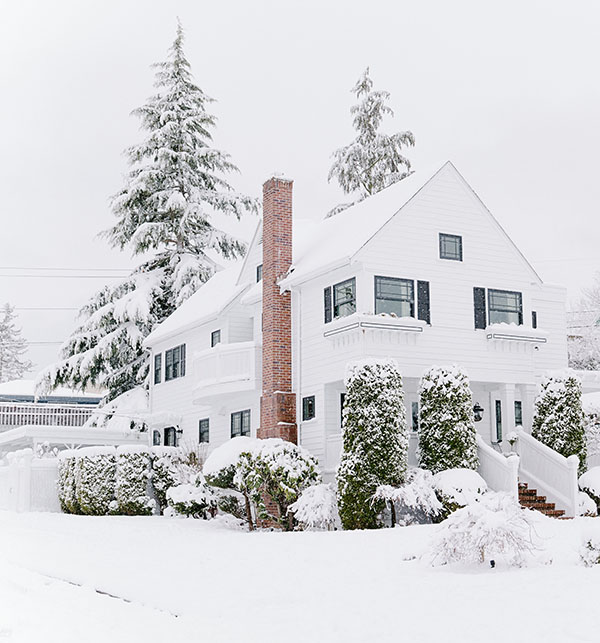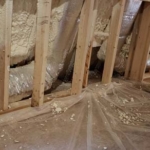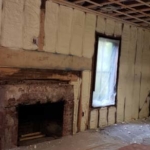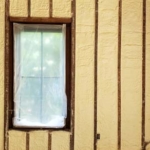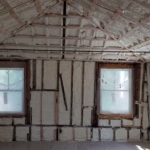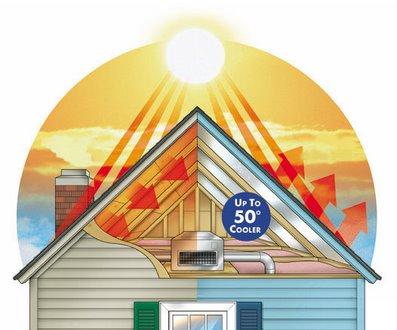Many cities across the country were hit with a major winter storm last week, and for some, it was the first big one of the season. One area of the house that gets hit the hardest during a winter storm is the roof. Make sure to monitor the health of your roof during the winter to make sure it is strong enough to take the brunt of bad weather. If the snow isn’t melting quickly, it means that heat from your home isn’t escaping through your attic floors and then transferring from your roof to the exteriors. That means your roof is doing its job!
Bare spots and icicles mean heat is escaping
If your roof gets a decent amount of snow on it, make sure it’s not melting in specific spots. That means there’s heat loss likely due to poor insulation and/or ventilation in the attic. If that is the case, give us a call once the snow melts.
After a snowfall, every homeowner should take a look at their roof and check for hot spots—areas on the roof where the snow has melted. It’s normal for some melting around venting and fireplace exhausts, but you shouldn’t see any bare patches on your roof. A snow-covered roof means your insulation is doing its job.[1] If not, it’s time for a new insulation package!
Also, keep an eye out for icicles—another sign of heat loss. If your roof is warm enough to melt the snow but it’s cold enough outside for snow to refreeze, your roof is losing heat. That’s not healthy for your energy bills or the environment.
Remove some snow if it gets too deep
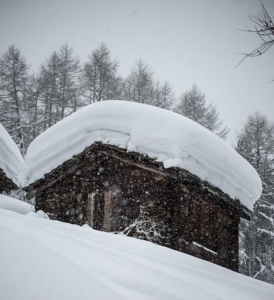
What about the weight of snow? If there’s ice too, that can be a heavy load. Add the weight of two layers of shingles and that’s one roof no one would want over their head. Generally, most roofs max out at about 20 pounds of snow per square foot, which translates to around two feet of wet snow or up to four feet of light, fluffy snow.[2]
Once you start hitting those levels, you may want to think about removing the snow. Otherwise, it could potentially cause your roof to cave in, which is a terrible experience in any weather, but particularly during subzero temperatures. Still, you can’t exactly get on top of your roof with a snow shovel. If you have an asphalt roof, you run the risk of doing serious damage to your shingles, which can cause your roof to leak afterwards—and all kinds of havoc as a consequence.2
If you don’t have the proper equipment to remove the snow yourself, hire a roofing contractor to safely handle the removal for you. It generally only costs about $100 to $300, and it will save your roof a lot of wear and tear.[3]
Install an ice and water shield
We suggest you install an ice and water shield over the first four feet of roof, on top of the sheathing—not just along the edges near gutters. This adds a second layer of protection against leaks and moisture where ice dams may occur, so if water gets in below the shingles the sheathing is watertight.
Another reason to add an ice and water shield is it seals around nails, unlike tar paper, roofing felt, or asphalt paper. If you have shingles on your roof, as most North American homes do, for every nail that goes through the tar paper there’s a tiny hole — an open invitation for water in your attic.
Check your attic (and garage) after a storm too. If you see frost on the sheathing it’s not a good sign. It means your attic isn’t properly vented for your specific insulation type or it is lacking insulation all together, which could lead to mold or rot. If you see any signs of mold or rot in your roof, call a professional remediation company.
Your roof and attic are crucial when it comes to protecting your home over the winter. Please contact us to schedule an appointment to make sure your insulation package is up-to-date.
[1] National Post (Feb. 7, 2015). Snow piling up on your house is a good indicator of the roof’s condition. Retrieved from nationalpost.com.
[2] Modernize (2019). Is Snow Good or Bad for Your Roof? Retrieved from modernize.com.
[3] Cost Owl (2019). How Much Does Roof Snow Removal Cost? Retrieved from costowl.com.






